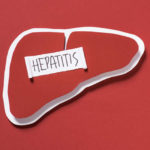Vertex Treatment May Also Help Non-Responders
Impressive Vertex hepatitis C drug data unveiled
By Bill Berkrot
NEW YORK, Nov 1 (Reuters) – A closely watched hepatitis C treatment being developed by Vertex Pharmaceuticals Inc showed an impressive ability to knock out the virus in patients who failed other treatments and those not previously treated for the serious liver disease, data from mid-stage studies show.
As it has in earlier studies, the experimental Vertex drug, telaprevir, when combined with standard treatments, showed the potential to cut in half the 48 weeks of treatment needed with the current standard of care and with greater efficacy.
In a study known as Prove 3 with 453 patients who had failed previous treatment with pegylated-interferon and ribavirin, 52 percent of those who received telaprevir saw the virus fall to undetectable levels and remain there 12 weeks after stopping treatment, according to interim analysis of data to be presented at the American Association for the Study of Liver Diseases meeting in San Francisco next week.
The percentage with undetectable virus 24 weeks after stopping treatment will yield the critical measure known as sustained viral response (SVR).
Within the 52 percent result, the virus was undetectable in 41 percent of patients who had not responded to previous treatment and 73 percent of those who had relapsed after previous treatment.
The Prove 3 result “is noteworthy as patients who have failed therapy are very difficult to manage due to limited available treatment options and are at greater risk for developing progressive liver disease,” Dr. John McHutchinson, lead investigator of the Vertex-sponsored study, said in a statement.
Hepatitis C is a blood-borne liver disease that can lead to chronic liver disease, liver cancer, cirrhosis and death. The virus affects an estimated 3.2 million people in the United States alone and some 170 million worldwide.
Vertex also released final results from an earlier study called Prove 2 involving 323 hepatitis C patients who had not received prior treatment for the virus.
A higher SVR rate is expected in that patient population and telaprevir delivered on that.
In that study, 69 percent of patients in the telaprevir combination group had the virus fall to undetectable levels following 24 weeks of treatment, compared with a 46 percent SVR rate after 48 weeks of standard treatment.
A third study tested whether telaprevir might be as effective when given twice a day rather than three times per day as it has been in clinical trials.
The twice daily dosing, which could prove to be a more attractive option for patients, demonstrated similar efficacy and turned up no additional safety concerns, according to interim results, the company said.
The most common adverse side effects seen with telaprevir patients in the Prove studies were gastrointestinal problems, skin rash and anemia. Fourteen percent of telaprevir patients discontinued treatment due to adverse events in Prove 2 and 16 percent in Prove 3, Vertex said. That compared with 4 percent and 7 percent dropout rates in the control arms.
Vertex is set to begin pivotal late stage trials of telaprevir along with partner Johnson & Johnson.
Several companies are developing potential rival medicines, including boceprevir from Schering-Plough Corp, but telaprevir is widely expected to be the first in its class to reach the market.
(Reporting by Bill Berkrot, editing by Richard Chang)
—
URL for Article Source:
http://www.reuters.com/article/rbssHealthcareNews/idUSN30269810
20081101







